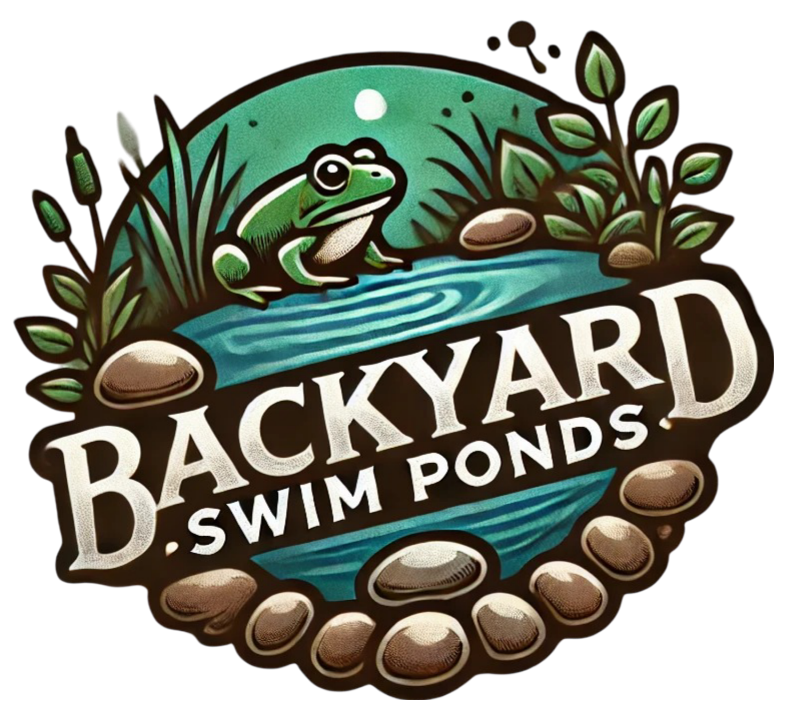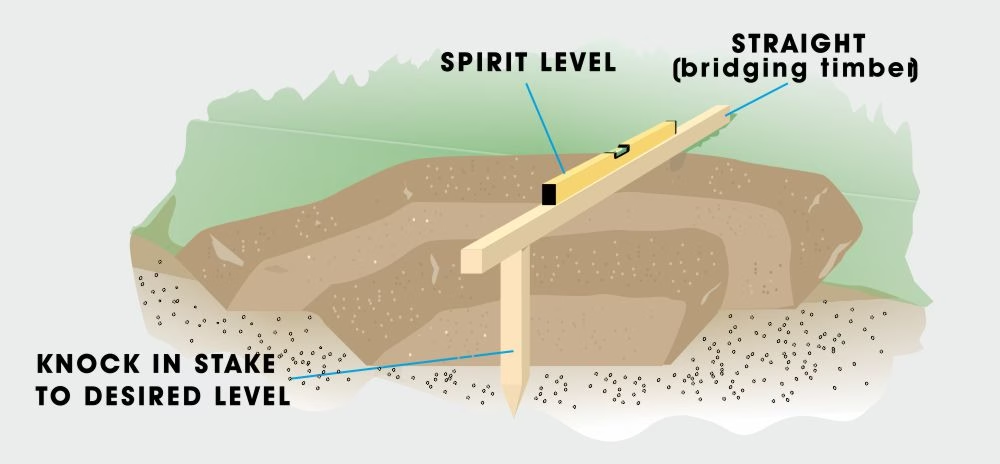Creating swim spaces that cater to both human recreation and local wildlife is not just a feasible goal; it’s an essential one that benefits everyone involved. As urban planners and environmental enthusiasts, you have a pivotal role in shaping swimming areas that are not only enjoyable but also sustainable. This guide will explore essential design techniques, successful case studies, maintenance practices, regulations, and how to balance recreation with conservation. By the end, you will have the knowledge you need to create swim spaces that support ecological integrity while providing safe zones for swimming.
Creating Safe and Welcoming Swim Zones
To design swim zones that prioritize safety for wildlife, you should focus on several key elements:
-
Sloped Edges: Incorporating gently sloping edges into the pool’s design allows small animals to escape if they accidentally fall in. This feature is especially essential for amphibians and small mammals.
-
Separate Zones: Establish distinct areas for human swimming and wildlife habitation. By creating deeper swimming zones for humans and shallower, planted areas for wildlife, you can significantly reduce interactions between the two.
-
Wildlife-Friendly Lighting: Opt for low-level, wildlife-friendly lighting, such as amber or red lights, which minimizes disturbances to nocturnal animals and supports their natural behaviors.
Research suggests that implementing these design features not only improves safety for wildlife but also enhances the overall swimming experience for human users.
An image illustrating a leveled pond with gentle slopes suitable for wildlife escape (Source: BigCommerce)
Protecting Ecological Integrity Through Design
Designing swimming areas that uphold ecological integrity is crucial. Here are some methods to incorporate wildlife habitats while ensuring usability:
-
Natural Filtration Systems: Utilize native plants for water filtration. This approach keeps the pool clean and creates a healthier environment for local wildlife.
-
Strategic Planting: Choose native aquatic plants that attract beneficial insects and create habitats for amphibians. This not only enhances the aesthetics of the space but also contributes to a balanced ecosystem.
-
Chemical Impact Awareness: Understand how chemicals like chlorine affect local ecosystems. Natural swimming pools (NSPs) provide a viable alternative by maintaining chemical-free water, benefiting both recreation and wildlife health.
These design practices have proven effective in various projects and climates, providing valuable insights into their adaptability.

A diagram demonstrating a natural filtration system utilizing various aquatic plants to maintain water quality (Source: Fluidra)
Case Studies of Successful Swim and Wildlife Coexistence
Several successful case studies illustrate how well-designed swim spaces can foster coexistence between humans and aquatic life:
-
New Brighton Pool, Vancouver: This natural swimming pool was converted from a traditional pool and features a regeneration zone with aquatic plants for natural filtration. The design incorporates social areas for picnicking while maintaining ecological integrity.
-
Webber Natural Swimming Pool, Minneapolis: With a regeneration basin populated by frogs and turtles, this public pool effectively promotes wildlife. The entire volume of water is recycled every 12 hours, enhancing water quality for both wildlife and swimmers.
-
Borden Park Natural Swimming Pool, Edmonton: Designed with a bio-mechanical filtration system and hydroponic plants, this pool not only accommodates swimmers but also preserves habitats for various animals.
These examples demonstrate that combining recreational spaces with ecological considerations is feasible across different environments.
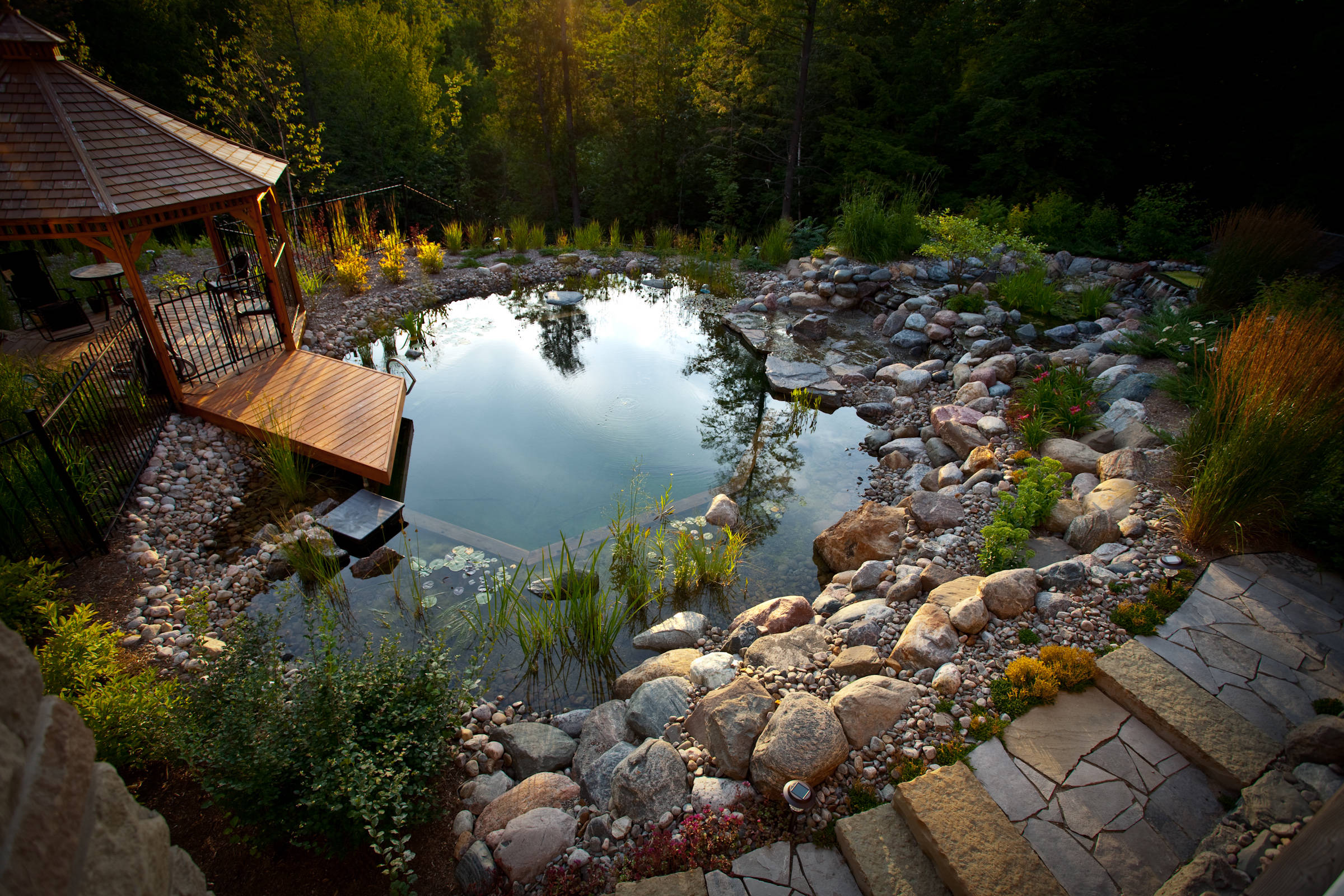
An image showing a natural swimming pool in a forest setting, highlighting a successful integration with the natural environment (Source: Houzz)
Maintenance Best Practices for Sustainable Swim Spaces
Maintaining swim spaces to support wildlife requires regular effort and specific practices:
-
Regular Monitoring: Consistent assessments of water quality and plant health are essential for a thriving ecosystem.
-
Seasonal Adjustments: Different seasons necessitate tailored approaches, such as leaving plant debris in winter to provide habitats for insects and small animals.
-
Conflict Resolution: It’s crucial to address potential conflicts between human activities and wildlife needs. Developing educational materials can help swimmers understand how to interact positively with the ecosystem.
By following these best practices, you can create an environment that enhances the experience for both wildlife and users.
An image depicting a person testing water quality, essential for the maintenance of wildlife-friendly swim spaces (Source: Virginia DEQ)
Navigating Regulations for Wildlife-Friendly Design
Understanding local regulations is critical when planning and maintaining wildlife-friendly swimming areas:
-
Health Department Guidelines: Local health departments outline requirements for public swimming pools, which can impact the inclusion of wildlife-friendly features.
-
Wildlife Management Recommendations: Guidelines from agencies like the U.S. Fish and Wildlife Service can support community and ecological goals in the design and maintenance of swim spaces.
-
Community Safety: Balancing safety in relation to interactions with local wildlife while ensuring human safety requirements are met presents challenges that need to be addressed thoughtfully.
Collaborating with regulators while advocating for innovative designs can lead to more inclusive and environmentally friendly swimming spaces.
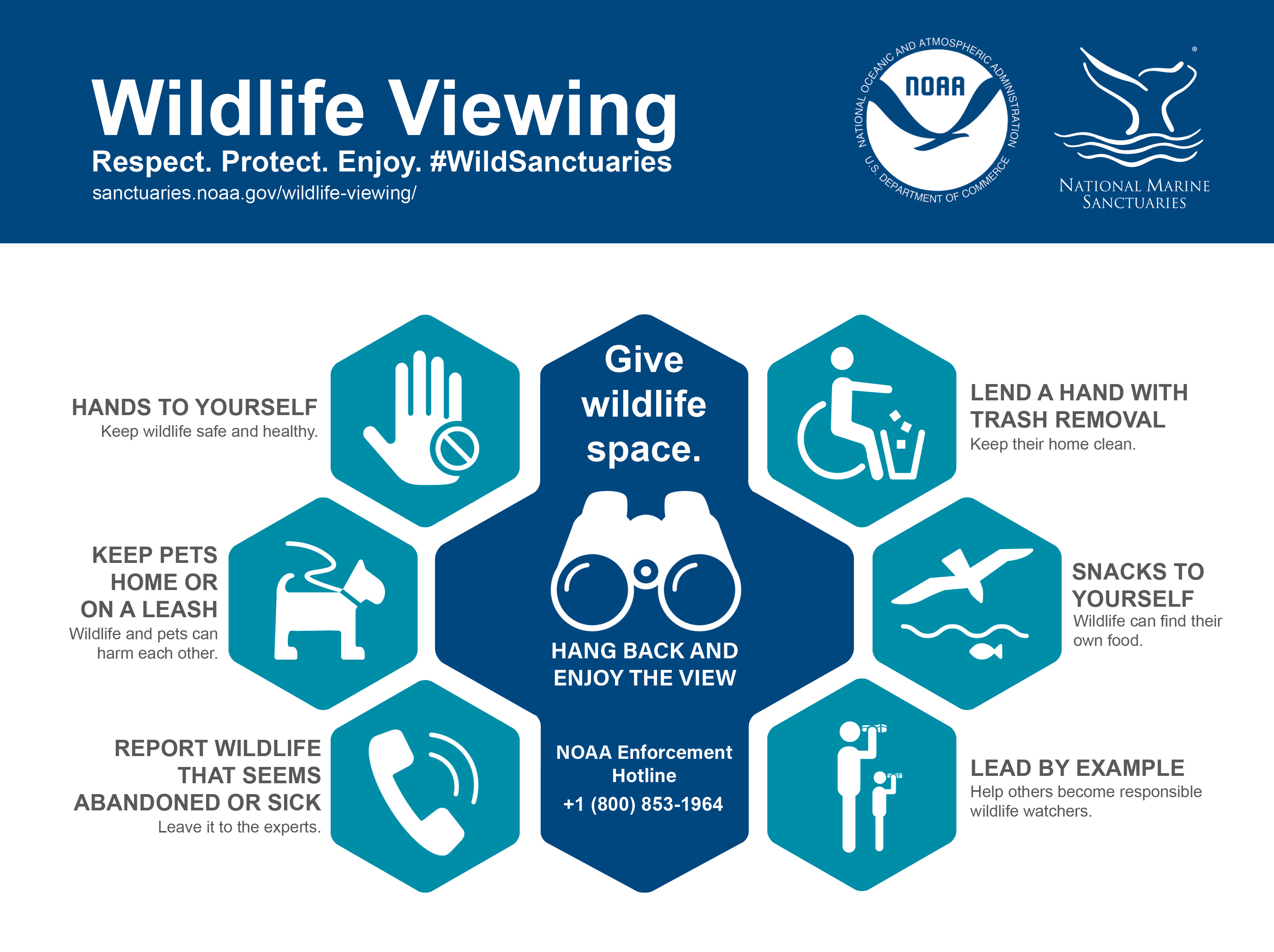
An infographic summarizing guidelines for wildlife conservation, applicable to swim space regulations (Source: NOAA)
The Balance of Recreation and Conservation: Future Perspectives
Looking ahead, fostering community engagement in the design of swim spaces can lead to balanced ecological benefits:
-
Community Involvement: Encouraging participation in the planning and maintenance process ensures that a variety of perspectives are considered, balancing the needs of residents and wildlife.
-
Biodiversity Potential: Thoughtful design can increase local biodiversity in recreational areas, creating environments that are both enjoyable and ecologically beneficial.
-
Educational Initiatives: Implementing programs that raise awareness about the importance of wildlife-friendly practices can cultivate a rapport between local ecosystems and community members.
As we progress, prioritizing sustainability and ecological integrity in recreational spaces is essential for future success.
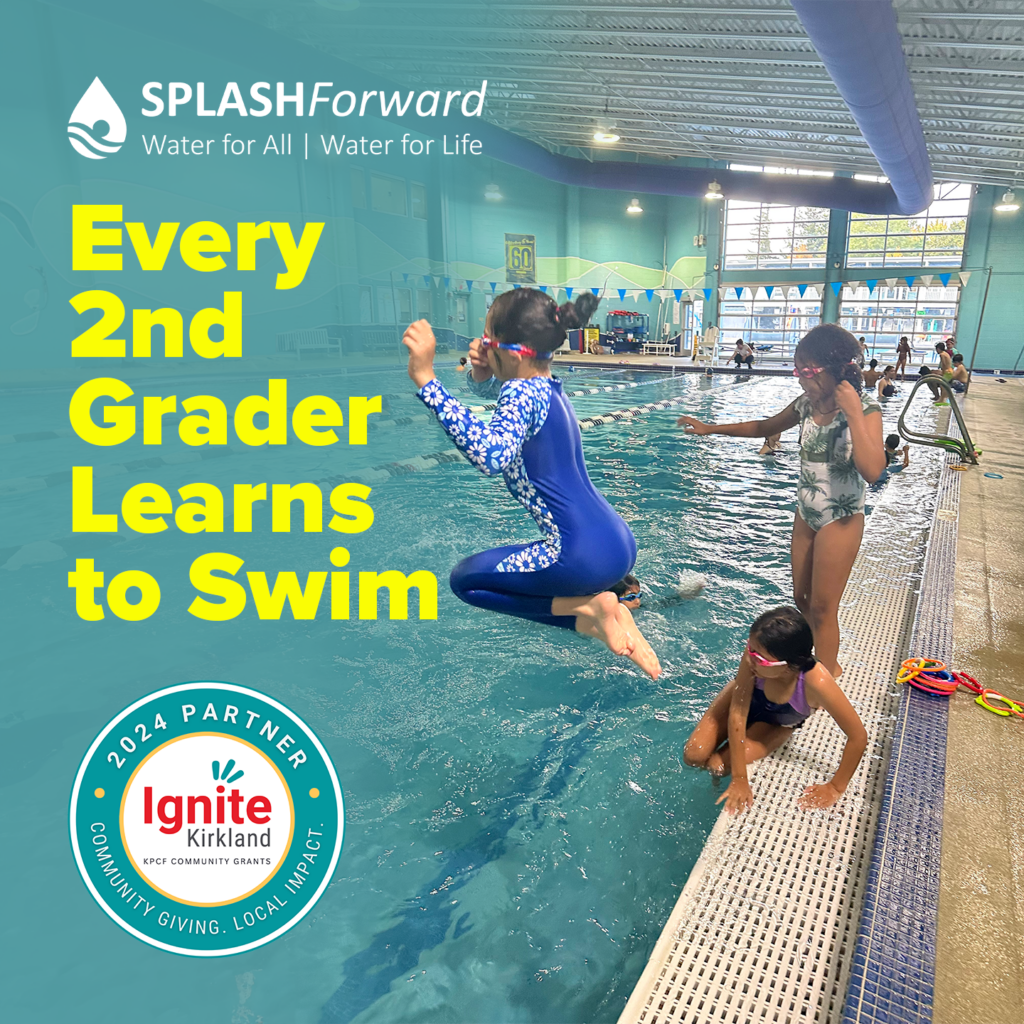
An image depicting community swimming events, reflecting the importance of community engagement in swim space initiatives (Source: Splash Forward)
Conclusion
Designing harmonious swim spaces that address the needs of wildlife and human users is challenging, yet entirely achievable. By implementing thoughtful design techniques, learning from successful case studies, adhering to local regulations, and encouraging community engagement, you can create swimming environments that foster biodiversity while providing enjoyment for everyone. As environmental enthusiasts and community planners, your efforts are vital in championing spaces that support both recreational fun and ecological health, ensuring a sustainable future where both people and wildlife can thrive.
